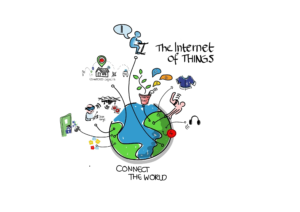The Role of Green Technology in Combating Climate Change
Green technology is pivotal in the fight against climate change, offering innovative and sustainable solutions for a better tomorrow. The accelerating climate crisis demands urgent action, and green technology stands as a beacon of hope in navigating this challenge. This article delves into the multifaceted role of green technology in combating climate change, exploring key aspects, and providing tangible solutions. The issues, solutions, and an overview of the key areas covered will be outlined in this comprehensive guide.
The Urgent Need for Action: Addressing Climate Change
Understanding the Scale of the Problem
Climate change, driven by human activities, is causing unprecedented disruptions to ecosystems and societies around the globe. Rising global temperatures, extreme weather events, and sea-level rise threaten lives, livelihoods, and the planet’s delicate balance. The scientific consensus is unequivocal: immediate and decisive action is needed to mitigate the impacts of climate change. Green technology solutions provide a pathway to address this crucial challenge. Addressing climate change effectively requires a concerted effort from individuals, businesses, and governments, and green technology is a cornerstone of this effort.
The Role of Green Technology
Green technology encompasses a wide range of innovative solutions designed to reduce our environmental footprint. From renewable energy sources to sustainable transportation and resource management, these technologies aim to transition us toward a more sustainable and environmentally conscious way of living. The benefits are clear; reduced greenhouse gas emissions, improved air quality, and the preservation of natural resources. By embracing green technology, we can create a more resilient and sustainable future.
Renewable Energy: Powering a Sustainable Future
Harnessing Solar, Wind, and Other Sources
Renewable energy sources, like solar and wind power, represent a pivotal component of green technology in combating climate change. These sources offer a sustainable alternative to fossil fuels, significantly reducing greenhouse gas emissions associated with traditional energy production. Solar panels convert sunlight into electricity, while wind turbines harness wind energy to generate power. Such transitions are crucial in addressing climate change and achieving sustainability goals.
Impact and Examples
Numerous countries and communities are already actively implementing renewable energy initiatives. For instance, Germany’s investment in wind power has positioned it as a leader in renewable energy adoption. Similarly, the growing popularity of solar panels on residential homes underscores the global shift toward sustainable energy. These examples showcase the positive impact renewable energy can have in mitigating climate change.
Sustainable Transportation: Reducing Emissions from Vehicles
Electric Vehicles and Alternative Fuels
The transportation sector is a major contributor to greenhouse gas emissions. Green technology offers alternative solutions such as electric vehicles (EVs) and alternative fuels, contributing significantly to reducing emissions and lowering our environmental footprint. EVs, powered by electricity from renewable sources, produce zero tailpipe emissions. Transitioning to sustainable transportation models is essential in combating climate change.
Case Studies and Impact
Many major automotive manufacturers are investing heavily in developing and manufacturing EVs. Electric buses are replacing diesel buses in many cities, demonstrating the potential for cleaner public transport. Government incentives and policies encouraging the adoption of electric vehicles play a crucial role in accelerating the transition to sustainable transportation.
Green Building Technologies: Creating Sustainable Structures
Eco-Friendly Materials and Energy-Efficient Design
Green building technologies play a crucial role in reducing the environmental impact of construction and operation. These technologies focus on using eco-friendly materials, energy-efficient design principles, and sustainable site selection. By incorporating these aspects into the design and construction process, we can create buildings that are both aesthetically pleasing and environmentally conscious. This aspect is crucial for creating a sustainable built environment.
Sustainable Practices and Examples
Many buildings incorporate passive design elements, such as natural ventilation and daylighting, minimizing the need for artificial light and heating/cooling systems. The adoption of green building materials and sustainable practices in construction and design is accelerating to create more resilient and sustainable structures in our urban landscapes, helping combat climate change.
Related Post : How IoT Devices Are Transforming Everyday Lives
Resource Conservation: Optimizing Resource Use
Sustainable Agriculture and Waste Management
Efficient resource management through sustainable agricultural practices and effective waste management systems is essential to combating climate change. By implementing techniques that minimize resource depletion and waste generation, we can significantly contribute to long-term sustainability. Sustainable agriculture practices, such as permaculture and agroforestry, aim to create resilient farming systems that minimize environmental impact.
Examples and Impact
Implementing waste reduction initiatives, like recycling and composting programs, significantly minimize landfill waste, helping to combat the climate change. Adopting sustainable agriculture practices not only helps to conserve resources but also contributes to carbon sequestration in agricultural lands.
In conclusion, green technology plays a critical role in combating climate change by offering sustainable solutions for energy production, transportation, and resource management. By embracing innovation and adopting these technologies, we can mitigate the impacts of climate change and foster a more sustainable future. Implementing these solutions requires significant investment and policy support, alongside public awareness and individual action. This path toward a sustainable future hinges on collaboration between governments, businesses, and individuals. Take the initiative to learn more about green technologies and their applications, and support their implementation through responsible choices. Let’s all contribute to a greener tomorrow!
Share this content:














2 comments